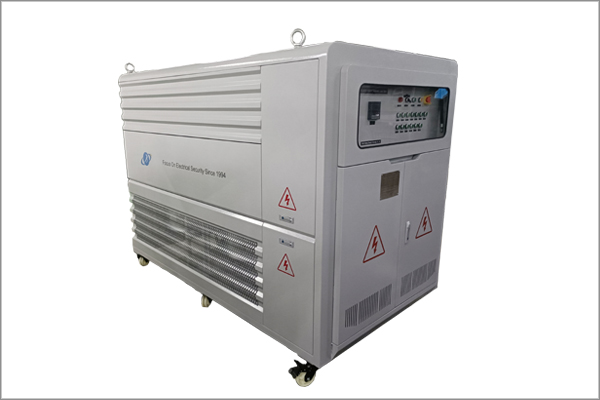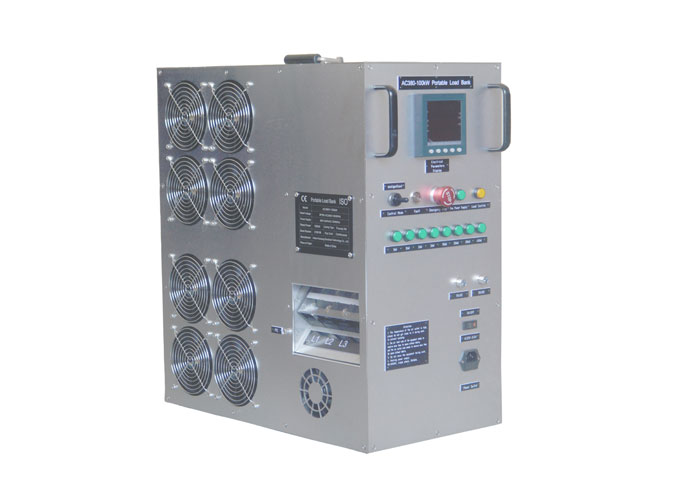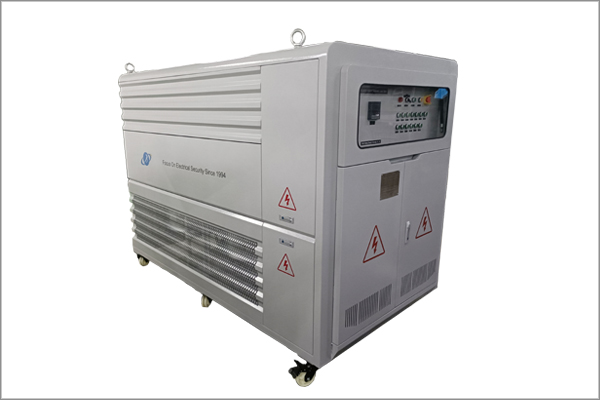The Significance of AC Load Banks in Different Industries
Time:2025-07-09
Introduction
The proper functioning of electrical power systems is fundamental across diverse industries. AC load banks have emerged as indispensable devices in this regard, as they are designed to mimic real - world electrical loads. This ability to simulate different load conditions is crucial for validating the performance, reliability, and safety of power - related equipment and systems.
AC Load Banks in the Energy Sector
Generator Testing and Maintenance
In power plants, whether they are fossil - fuel - based, nuclear, or renewable energy facilities like wind or solar farms, generators are the heart of power production. AC load banks are extensively used to test new generators during commissioning. By applying varying levels of load, engineers can assess the generator's ability to maintain a stable voltage and frequency output. For example, in a large - scale solar power plant, before the solar - generated electricity is integrated into the grid, the inverters (which convert DC power from solar panels to AC power) are connected to AC load banks. This testing ensures that the inverters can handle different load demands, such as sudden increases in load when multiple electrical devices in the grid start simultaneously.
During routine maintenance of generators, load banks are used to perform load - testing. This helps in detecting issues such as fuel system problems, worn - out engine components, or problems with the generator's excitation system. In diesel generators, running them under load using an AC load bank helps burn off any unburned fuel, oil, or condensation that may have accumulated, preventing engine damage and improving overall efficiency.
Grid Stability and Power Quality
AC load banks also play a role in grid - connected systems. They can be used to test the performance of grid - tie inverters and other power - conditioning equipment. In regions with a high penetration of renewable energy sources, the intermittent nature of power generation from wind and solar can pose challenges to grid stability. AC load banks can simulate different load scenarios, allowing grid operators to test how the grid responds to fluctuations in power generation. This helps in developing strategies for grid stabilization, such as energy storage integration or better load - shedding techniques.
Moreover, load banks can be used to test the power quality of the grid. By injecting harmonic - rich loads, they can help identify and mitigate issues related to voltage distortion and harmonic pollution, which can cause problems for sensitive electrical equipment connected to the grid.
AC Load Banks in the Information Technology Industry
Data Center Power Infrastructure
Data centers are the backbone of the digital world, housing vast amounts of computing and storage equipment. Ensuring a reliable power supply is of utmost importance to prevent data loss and service disruptions. AC load banks are used to test the uninterruptible power supply (UPS) systems in data centers. A UPS is designed to provide immediate power backup in case of a mains power failure. By connecting a UPS to an AC load bank and simulating the actual power load of the data center servers and cooling systems, technicians can verify the UPS's capacity to sustain the load for the required duration.
AC load banks are also used to test the electrical distribution systems within data centers. They can help identify issues such as over - loaded circuits, voltage drops, and problems with power distribution units (PDUs). For example, if a new data center is being built or an existing one is being upgraded, load banks can be used to test the new electrical infrastructure before the servers are installed. This ensures that the power system can handle the high - density computing loads of modern data centers.
Telecommunication Networks
Similar to data centers, telecommunication networks rely on a stable power supply to keep their base stations, switches, and other equipment operational. AC load banks are used to test the power systems in telecommunication facilities. In mobile phone base stations, which are often located in remote areas, the power supply may come from a combination of grid power, diesel generators, and battery backups. Load banks are used to test the performance of these power sources and their ability to handle the load of the base station equipment, including transmitters, receivers, and cooling systems. This helps in ensuring continuous communication services and minimizing downtime.
AC Load Banks in the Healthcare Industry
Hospital Power Systems
Hospitals are critical facilities where a continuous power supply is essential for patient care. Life - support systems, operating room equipment, and medical monitoring devices all depend on reliable electricity. AC load banks are used to test the emergency power systems in hospitals, such as backup generators and UPS systems. Regular testing with load banks ensures that these systems can quickly take over in case of a power outage and supply sufficient power to keep critical medical equipment running.
For example, in a large teaching hospital, the backup generator system is regularly load - tested using an AC load bank. This not only verifies the generator's capacity but also tests the transfer switches that switch between mains power and backup power. Any issues detected during the testing can be addressed promptly, ensuring the safety of patients in the event of a power failure.
Medical Equipment Testing
AC load banks are also used in the testing of medical equipment manufacturers. Before a new medical device, such as an MRI machine or a dialysis unit, is released into the market, it needs to be tested under different electrical load conditions. AC load banks can simulate the electrical loads that the device will encounter in a hospital setting, allowing manufacturers to ensure that the device operates safely and accurately under various power conditions. This helps in improving the quality and reliability of medical equipment, ultimately benefiting patient care.
Conclusion
AC load banks are versatile and essential tools in multiple industries. Their ability to simulate real - world electrical loads makes them invaluable for testing, maintaining, and optimizing power systems. From ensuring the stable operation of generators in power plants to safeguarding the continuous operation of data centers and hospitals, AC load banks contribute significantly to the reliable functioning of modern infrastructure. As technology continues to advance and the demand for reliable power grows, the role of AC load banks in different industries will only become more prominent.
News Recommendation
-
 2024-09-11
2024-09-11TRIUMPH LOAD EXHIBITING AT Enlit Europe 2024 -BOOTH 7.H08
-
 2023-04-21
2023-04-21TRIUMPH LOAD EXHIBITING AT DATA CENTER WORLD GERMANY 2023-BOOTH F909
-
 2023-04-06
2023-04-06TRIUMPH LOAD EXHIBITING AT ELECTRIC POWER TECH KOREA 2023 – Booth G109
-
 2022-05-05
2022-05-05What is the role of ac load bank for power supply?
-
 2022-05-05
2022-05-05What is the role of the load bank?


